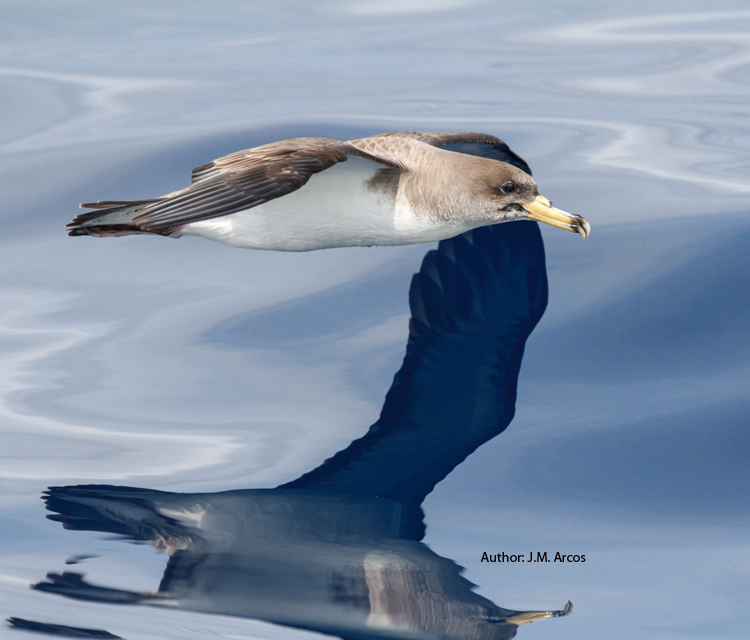The study of juvenile migration behaviour of seabird species has been limited so far by the inability to track their movements during long time periods. Foraging and flying skills of young individuals are assumed to be inferior to those of adults, making them more vulnerable during long-distance migrations. In addition to natural oceanographic effects and intrinsic conditions, incidental seabird harvest by human fisheries is one of the main causes of worldwide seabird population declines, and it has been hypothesized that juveniles are particularly vulnerable to bycatch during their first weeks at sea after leaving the nest. Solar-powered satellite tags were used to track the at-sea movements of adults and juveniles of Scopoli's shearwater Calonectris diomedea after the autumn departure from their breeding colony in Chafarinas Islands (southwestern Mediterranean Sea). Eighty per cent of juvenile tags stopped transmitting during the first week at sea, within 50 km of their natal colony, in an area with one of the highest concentrations of fishing activities in the Mediterranean Sea. All adult birds tagged and only 20% of juveniles migrated into the Atlantic and southwards along the coast of West Africa. The two age groups showed different habitat preferences, with juveniles travelling farther from the coast, in windier and less productive waters than adults. Results show that Scopoli's shearwater juveniles are particularly vulnerable to mortality events, and fisheries, along with differential age-related behaviour skills between adults and juveniles, are likely causes of this mortality. Overall, the study highlights the importance of conducting tracking studies during the first stages of juvenile migration. informacion[at]ebd.csic.es: Afán et al (2019) Maiden voyage into death: are fisheries affecting seabird juvenile survival during the first days at sea? Roy Soc Open Sci https://doi.org/10.6084/m9.figshare.c.4365833.v1
https://royalsocietypublishing.org/doi/10.1098/rsos.181151








 Las altas temperaturas están provocando que las lagunas y las marismas de Doñana pierdan agua rápidamente
Las altas temperaturas están provocando que las lagunas y las marismas de Doñana pierdan agua rápidamente



